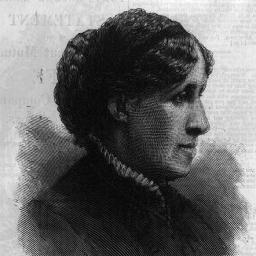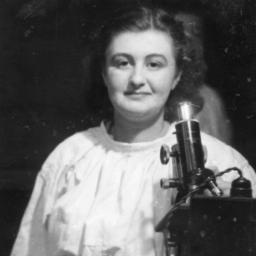Mary Edwards Walker

In all of United States history, there has only been one woman to receive the Medal of Honor. Mary Edwards Walker is that woman. As a surgeon, women’s rights advocate, abolitionist, and spy, Walker became the first female U.S. Army surgeon during the Civil War. Her legacy has been celebrated across the country: in 2012 Walker’s hometown unveiled a 900-pound bronze statue in honor of her contributions and she is featured as part of the American Women Quarters Program.
Mary Edwards Walker was born on November 26, 1832 in the Town of Oswego, New York. She was the fifth daughter of abolitionists Alvah and Vesta Whitcomb Walker. Her parents encouraged her to think freely, and allowed her to wear “bloomer” pants, instead of the skirts and corsets women were required to wear at the time. Education was also very important to the Walker family. Mary’s parents started the first free school in Oswego, New York so their daughters would be just as educated as their son. Outside of school, all of the children helped with manual labor on the farm. After finishing at her parent’s school, Walker and two of her older sisters attended Falley Seminary in Fulton, New York. When Walker graduated, she became a teacher in Minetto, New York but she knew she wanted to become a doctor. She worked until she saved enough money to pay for medical school. Walker then attended Syracuse Medical College and received her medical degree in 1855. She became the second woman to graduate from this college after Elizabeth Blackwell.
Shortly after she graduated, Walker married another medical school student Albert Miller on November 16, 1855. They started a medical practice together in Rome, New York. However, the practice did not succeed because the public did not want to accept a female doctor. The couple later divorced.
When the Civil War began in 1861, Walker wanted to join the Union’s efforts. She went to Washington but was not allowed to serve as a medical officer because she was a woman. She decided to still serve as an unpaid volunteer surgeon at the U.S. Patent Office Hospital in Washington. At the time, the army had no female surgeons, so Walker was only allowed to practice as a nurse in temporary hospitals set up around the capital. In 1862, Walker moved to Virginia and started treating wounded soldiers near the front lines at Fredericksburg and Chattanooga. In 1863, her request to practice as a surgeon was finally accepted. She became the first female U.S. Army surgeon as a "Contract Acting Assistant Surgeon (civilian)" by the Army of the Cumberland.
During her work as a surgeon in the war, Walker often crossed battle lines to care for soldiers and civilians. In April of 1864, Walker was captured by Confederate troops as a spy. She was held as a prisoner of war for four months at the notorious Castle Thunder prison near Richmond, the Confederate capital. While imprisoned, she refused to wear the women’s clothes provided to her. She wore men’s clothes her entire life because she felt they were more comfortable and hygienic and made her job as a surgeon easier. She had even wore pants under her skirt at her wedding. Walker was released from prison in August of 1864 as part of a prisoner exchange with other medical doctors. In September 1864, she was contracted as the assistant surgeon of the Ohio 52nd Infantry. During the remainder of the Civil War, Walker served at the Louisville Women's Prison Hospital and at an orphan asylum in Clarksville, Tennessee. After the war's conclusion in 1865, Walker was awarded the Medal of Honor for Meritorious Service by President Andrew Johnson. She was never granted a military pension since she had never been officially commissioned in the army, A few years later, Walker published a party autobiographical book called Hit: Essays on Women's Rights in 1871.
Beyond her work in the Civil War, she was an advocate for women’s rights. She famously wore pants and advocated for “dress reform.” She was arrested in New Orleans in 1870 because she was dressed like a man. This was not her only arrest for wearing men's clothes, including her signature top hat. Walker responded to the criticism of her sartorial choices by saying, "I don't wear men's clothes, I wear my own clothes."[1] She also fought for suffrage and tried to register to vote in 1871, but was denied. She believed the US Constitution already granted women the right to vote. In 1912, and 1914, she testified in front of the US House of Representatives in support of women's suffrage. As suffragists moved towards advocating for a federal amendment, and she was ostracized by more mainstream suffragists for her choice to wear pants, jackets, and top hats, Walker became increasingly distanced from the movement. In her later years, Walker opened up her home to others who were harassed or arrested for not conforming to traditional ideas for how people should dress.
In 1916, the Medal of Honor was taken away from Walker and many others after the government reviewed their eligibility. However, this did not stop Walker from wearing her award until her death in 1919. At the age of eighty-six, Mary Edwards Walker died of illness on February 21, 1919. She was buried in a black suit.
In 1977, President Jimmy Carter legally restored the Medal of Honor to Walker’s name.
[1] National Parks Service. "Dr. Mary Edwards Walker." Accessed June 27, 2019. https://www.nps.gov/people/mary-walker.htm.
- U.S. National Library of Medicine. "Changing the Face of Medicine | Mary Edwards Walker." October 14, 2003. https://cfmedicine.nlm.nih.gov/physicians/biography_325.html.
- National Parks Service. "Dr. Mary Edwards Walker." Accessed June 27, 2019. https://www.nps.gov/people/mary-walker.htm.
- National Parks Service, "Dr. Mary Edwards Walker." Access November 3, 2023. https://www.nps.gov/rich/learn/historyculture/dr-mary-edwards-walker.htm
- Lange, Katie. "Meet Dr. Mary Walker: The Only Female Medal of Honor Recipient." U.S. Army. Accessed March 7, 2017. https://www.army.mil/article/183800/meet_dr_mary_walker_the_only_female_medal_of_honor_recipient.
- Military.com. "Medal of Honor Spotlight: Dr. Mary Edwards Walker." Accessed July 13, 2019. https://www.military.com/history/dr-mary-edwards-walker.html.
- Sharon M. Harris, Dr. Mary Walker: An American Radical, 1832-1919 (New Brunswick: Rutgers University Press, 2009)
Photo: National Parks Service-https://www.nps.gov/people/mary-walker.htm
MLA – Alexander, Kerri Lee. “Mary Edwards Walker.” National Women’s History Museum, 2019. Date accessed.
Chicago – Alexander, Kerri Lee. “Mary Edwards Walker.” National Women’s History Museum. 2019. www.womenshistory.org/education-resources/biographies/mary-edwards-walker.
-
Freethought Trail. "Walker, Mary Edwards." Accessed July 13, 2019. https://freethought-trail.org/profiles/profile:walker-mary-edwards/.




